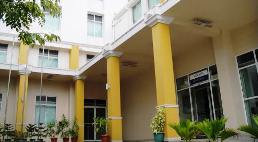
| Education System in the Maldives |
Two education systems co-exist in parallel among the islands known as the Maldives. The older schools are traditional Islamic ones where the medium of education is Dhivehi. Over the years, the government has been introducing more modern English-language ones and literacy levels are now high. Primary school begins at age 5, and takes 5 years to complete.
Although middle schooling is extensively implemented, there are inevitably different standards between the main island of Male and the far-flung smaller ones. This period of education takes a further 5 years, and completes the compulsory school program.
Secondary education is completed at high schools where the hurdle is to complete grades 11 and 12. Those who succeed may go on to local tertiary education, although the brightest must travel overseas to attend a top-flight university.
The Maldivian government maintains a condensed education program known as second chance. This is aimed at youth and adults who were unable to complete their formal schooling.
 The Maldives National University depicted here grew out of the Maldives College of Higher Education and was inaugurated in February 2011. It is situated on the main island of Malé, and has departments of arts, education, engineering technology, health sciences, hospitality & tourism sciences, Islamic studies, management & computing, and Shari’ah & law, as well centers for maritime studies, and open learning.
The Maldives National University depicted here grew out of the Maldives College of Higher Education and was inaugurated in February 2011. It is situated on the main island of Malé, and has departments of arts, education, engineering technology, health sciences, hospitality & tourism sciences, Islamic studies, management & computing, and Shari’ah & law, as well centers for maritime studies, and open learning.
Student numbers are approximately 4,000, with a further 2,000 enrolled for short courses.